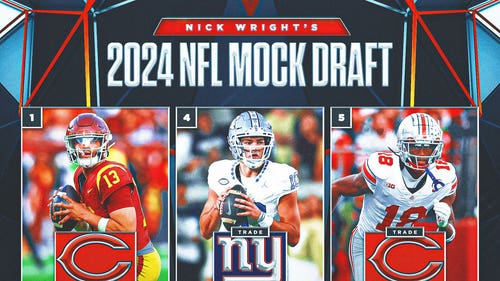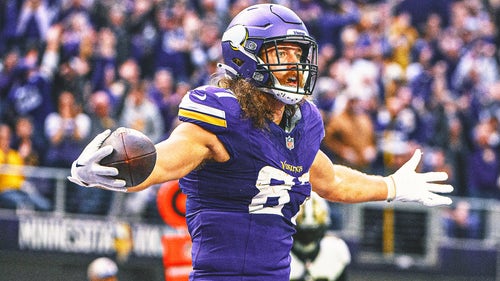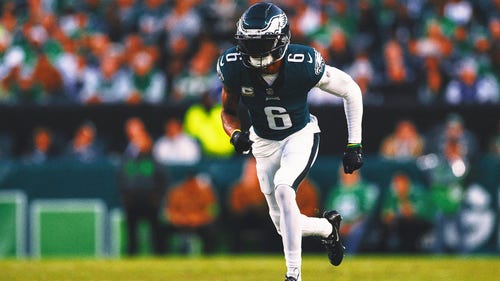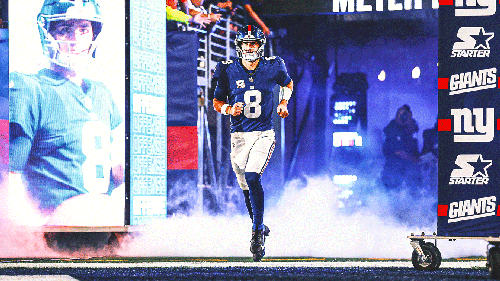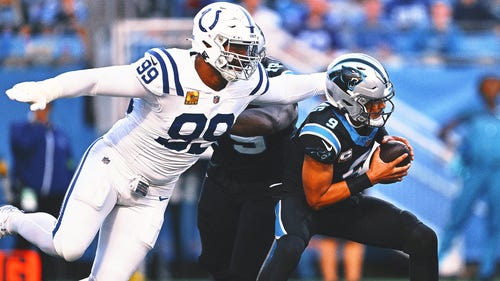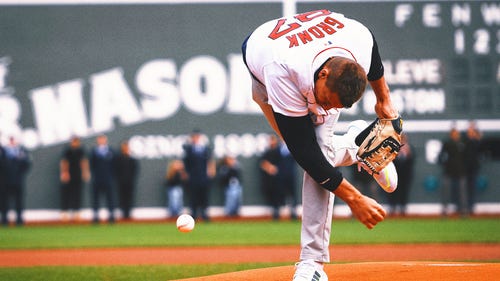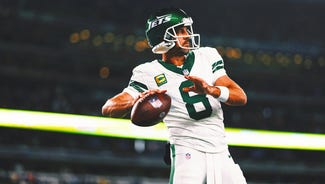
Analyzing Week 14's controversial calls
There are as many as 16 games a week in the NFL, and on average, there are 155 plays during each of those games.
Seven officials monitor the action on the field, and there’s a replay official upstairs. Most of the time, they make a very difficult job look easy.
However, there are missed calls in every game. As an official, you hope a miss doesn’t happen on the last play of the game. Unfortunately, that wasn’t the case in the Detroit-Minnesota game.
Here was the situation:
Minnesota had the ball, first-and-goal from the Detroit 1-yard line with nine seconds left in the game. Detroit led 34-28. Minnesota quarterback Joe Webb was scrambling out of the pocket when Detroit’s DeAndre Levy attempted to tackle Webb, who fumbled the ball. The ball was batted forward by Detroit’s Stephen Tulloch, recovered by the Lions’ Cliff Avril and the game was deemed over.
It was a very unfortunate miss here. Had this play been officiated correctly, Minnesota would have been entitled to one untimed down from the 5-yard line. By rule, the penalty would have been enforced from the spot of the foul, which was the 10-yard line.
There is no question that this was face mask on Levy. The face mask was clearly grabbed and Webb’s head was turned, which is what it takes for a penalty to be called.
There are lots of questions: Why was it missed? Shouldn’t the referee have seen the face mask? Was he in the proper position?
The answers to questions two and three are: maybe … and yes.
The referee’s original position is approximately 15 yards behind the line of scrimmage on the throwing arm’s side of the quarterback, which in this case, was on the right side of Webb.
When Webb rolled to his left, that meant that the referee was looking through his back, attempting to see whether the face mask was grabbed or not grabbed.
I’m not trying to make an excuse for the referee, but I think this would have been really tough call for the referee to make -- and the replays further convince me of that.
On the other hand, in this formation, the head linesman -- who you can see in replays on the bottom of the TV screen -- was on the line of scrimmage and was responsible for watching Vikings running back Toby Gerhart, who was lined up behind Webb.
Since the face mask occurred in the area after Gerhart attempted to block a defender, I feel the head linesman was in position to make this call.
It will be tough for Vikings to accept this foul not being called, which wouldn’t necessarily have guaranteed them a win. But at least it would have given them one more opportunity to attempt to score the winning touchdown.
I know the Vikings and their fans are going to be upset. But, I guarantee you, no more upset than the officials will be, once they watch the replays.
Let’s take a look at some of the other interesting calls from Week 14:
San Francisco at Arizona
THE SITUATION: San Francisco had the ball, third-and-18 at the Arizona 43-yard line with 7:38 left in the second quarter. San Francisco led 6-0.
THE PLAY: San Francisco quarterback Alex Smith completed an 11-yard pass to Kyle Williams. Arizona challenged the pass completion ruling. No review for a pass completion was held due to the review equipment not being functional. Arizona was not charged a timeout or a review.
MY TAKE: This was a very strange play. San Francisco was actually attempting to fake a 50-yard field goal on fourth down, a play in which the 49ers ended up scoring. But because Arizona challenged the third down play, just as the ball was being snapped, the play was nullified.
It’s important to note that the ruling on the field by the officials was that the challenge came before the snap. Once that decision was made, the fact that when the whistle was blown was irrelevant.
When referee Alberto Riveron went to the monitor to review the play, the replay equipment malfunctioned, so he was not able to review the play. He waited the mandated two minutes to see if they could get the equipment to work, but it never did. Therefore, the ruling on the field had to stand -- which by the way it would have, even if the play had gotten reviewed.
Arizona was not charged with a timeout, since there was no review. It’s as confusing as it gets in the NFL. And in the end, San Francisco not only didn’t only get a touchdown off its fake field goal attempt, but missed a field on the next play.
To make matters worse, the Cardinals scored on the first play after the missed field goal, so it was huge momentum changer.
Green Bay at Oakland
THE SITUATION: Green Bay had the ball, first-and-8 at the Oakland 8-yard line with 4:08 left in the second quarter. Green Bay led 31-0.
THE PLAY: Green Bay quarterback Aaron Rodgers was attempting to pass and was sacked by Aaron Curry. He fumbled and Oakland’s Kamerion Wimbley picked the ball up and returned it 82 yards for a touchdown.
Oakland’s Lamarr Houston was called for a block to the back on the return. Green Bay challenged the fumble ruling and the play was reversed to an incomplete pass. The penalty was then enforced at the Oakland 8-yard line.
MY TAKE: This was the second time that there was an equipment malfunction Sunday. Referee Pete Morelli waited for the replay computer to reboot, and after the equipment become operable, he was able to see that this was the ``tuck play’’ rule and the pass was ruled incomplete.
This was a double whammy for the Raiders, who not only did not get the fumble and return for a touchdown, but were penalized for clipping, which ended up being enforced after the play was reversed to an incomplete pass.
By rule, after a replay reversal, all personal foul penalties are enforced regardless of whether the reversal creates a dead ball. Any other fouls are ignored.
By the way, the tuck rule is my second least favorite rule and I would love to see that rule changed.
Tennessee at New Orleans
THE SITUATION: Tennessee had the ball, first-and-10 at the New Orleans 33-yard line with 3:18 left in the game. New Orleans led 22-17.
THE PLAY: Tennessee quarterback Jake Locker was sacked by Tracy Porter and fumbled on the play. It was recovered by the Saints’ Ramon Humber. Tennessee challenged the incomplete pass ruling, and the play was reversed.
MY TAKE: Over the last two weeks, it seems to me that referees and their replay officials have done everything they can to stay with the rulings on the field and not reversing the call, unless the video evidence was 100% indisputable. I am a fan of this.
In this case, I wondered if referee Mike Carey would overturn his on-field decision of a fumble. As we discussed this play on air, Joe Buck, Troy Aikman and I all felt it was forward pass. It’s one of the few times the three of us have reached a unanimous decision on anything, so clearly the video evidence was indisputable.
Remember the rule -- if the passer has control of the ball in his hand, and the hand starts forward, that action immediately begins a forward pass. Carey made the right decision in reversing this call.
New Orleans at Tampa Bay
THE SITUATION: New Orleans had the ball, third-and-4 at the Tennessee 4-yard line with 3:54 left in the third quarter. New Orleans led 6-3.
THE PLAY: New Orleans quarterback Drew Brees threw a 4-yard pass to Jeremy Graham in the end zone. The Saints challenged the pass completion ruling, and the play was upheld.
MY TAKE: This was a really close play. By the interpretation of the rule, a pass receiver must get both feet inbounds or another body part other than the hand or foot.
Thus, the John Madden-ism – one knee (body part) equals two feet. The ruling on the field was incomplete. The left foot was clearly down and the right foot was close to being out of bounds before the knee hit.
The interpretation of the NFL rule is that if a catch is made with a normal step and without a drag or a toe tap, it requires that the entire foot must come down in bounds. On this play, there is no question that Graham’s heel of the right foot came down, but the toe looked like it might have come down on the white line. That, on its own, is enough not to reverse the original ruling on the field.
In fact, FOX later showed a blown-up shot of the foot that made it clear the toe touched out of bounds. You could actually see Graham’s cleats touch the white border. Like I said, it was really close. But when it’s really close, leave it in the hands of the officials and stay with what was ruled on the field.
Tampa Bay at Jacksonville
THE SITUATION: Tampa Bay had the ball, first-and-10 from the Tampa Bay 20-yard line with 7:59 left in the third quarter. Jacksonville led 28-14.
THE PLAY: Tampa Bay’s LeGarrette Blount carried the ball 23 yards and was tackled by Russell Allen. As they were going to the ground, Blount fumbled and the loose ball was recovered by Jacksonville’s Jeremy Mincey.
Tampa Bay challenged that Blount was down by contact before he fumbled. The play was upheld.
MY TAKE: This was an interesting play because it looked like Blount’s butt was down before the ball came loose, but they didn’t reverse the ruling. Here’s why: No matter how many times you look at it, you never get a shot that shows Blount down and the ball still in his possession.
One shot shows you that the ball did come out, but you couldn’t see whether he was down. Another shot showed that his butt was down, but you couldn’t see the ball, period. It’s one of those plays where you try to piece two shots together in order to see both things. You just couldn’t do it on this play and, therefore, the original ruling on the field stood. It was the correct thing to do.






































































































































